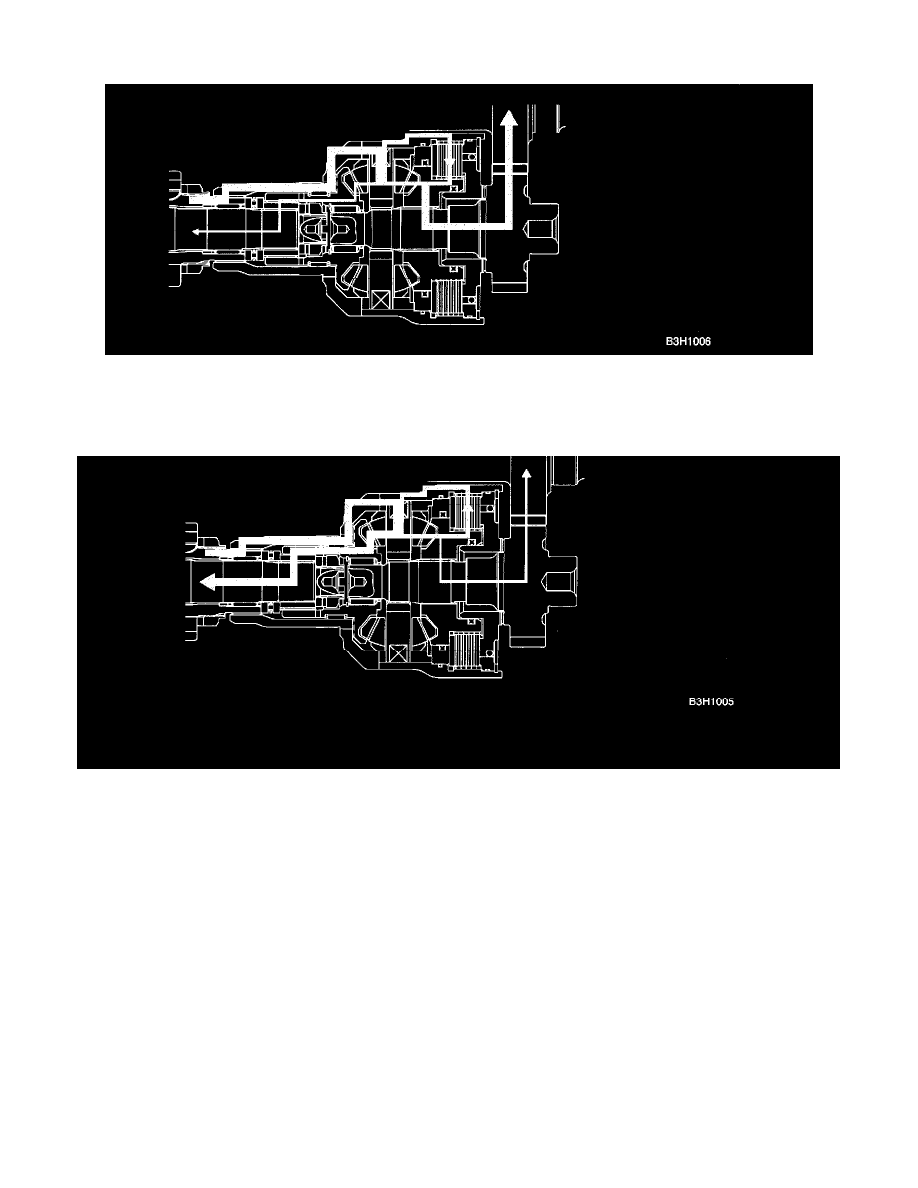Outback L.L.Bean Edition AWD F6-3.0L (2002)

3. DRIVING ON ROUGH OR SLIPPERY ROADS
^
When front wheels are on a slippery surface
When the front wheels begin to spin, the resulting speed difference between the front and rear drive shafts causes the viscous coupling to
generate significant amount of shear torque. As a result, the torque distributed to the rear wheels becomes much larger than that distributed to
the spinning front wheels. The traction and driving stability are thus ensured on a rough or slippery
^
When rear wheels are on a slippery surface
When the vehicle is accelerated quickly from a standing start with the rear wheels on a slippery surface, the distribution of the vehicle weight
on the front and rear wheels changes and the rear wheels start spinning. Due to the resulting speed difference between the front and rear drive
shafts, the viscous coupling generates a significant amount of shear torque, now in the direction opposite to that generated when the front
wheels are on a slippery surface. As a result, the torque distributed to the front wheels becomes much larger than that distributed to the rear
wheels.
